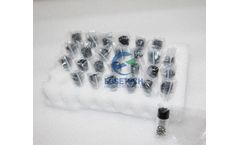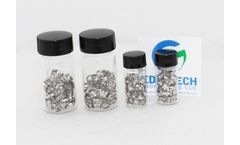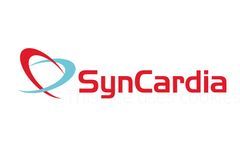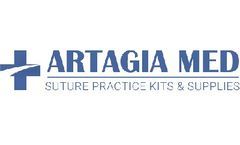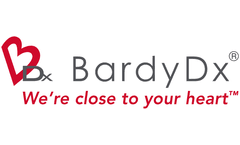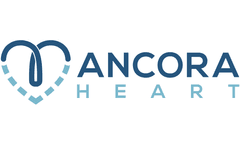Cardiac Surgery Articles & Analysis
19 articles found
Through its innovative application of this modern technology, Platinum Iridium Marker Bands not only serve as precision instruments that help physicians identify at-risk patients faster than traditional methods allow, but also vastly supplement documentation processes while streamlining treatment protocols in areas such as surgery, cardiac care wards, neonatal ...
The field of medicine is constantly evolving, with new procedures and technologies emerging that improve patient outcomes and reduce recovery times. As these innovations advance, the materials that make them possible become increasingly important. One such group of materials, fluoropolymers, is proving to be essential for a variety of cutting-edge medical procedures. Known for their exceptional ...
Through its innovative application of this modern technology, Platinum Iridium Marker Bands not only serve as precision instruments that help physicians identify at-risk patients faster than traditional methods allow, but also vastly supplement documentation processes while streamlining treatment protocols in areas such as surgery, cardiac care wards, neonatal ...
The following day he was brought to the cardiac catheterization lab where he underwent a balloon dilation of the pulmonary valve. ...
Discovery In the late 19th century, researchers attempted to produce a drug with a hemostatic effect by injecting a peptone and inducing the release of an anticoagulant. The water-soluble substance isolated from the liver was heparin, but no one knew it at the time. What unfolded over the next four decades would change the trajectory of anticoagulation treatment. By 1915, the most prominent ...
Click the links below to learn more about a specific condition: Atrial Septal Defect (ASD) Aortic Valve Stenosis (AVS) Coarctation of the Aorta (CoA) Complete Atrioventricular Canal defect (CAVC) d-Transposition of the Great Arteries Ebstein’s Anomaly Hypoplastic Left Heart Syndrome Interrupted Aortic Arch I-Transposition of the Great Arteries Patent Ductus Arteriosus (PDA) ...
Artificial hearts may sound like science fiction, but they’ve actually been in clinical use to help end-stage heart failure patients for more than 35 years — here’s what you should know. As the number of patients suffering from heart disease has increased over the years, so too has the need for heart transplants. Unfortunately, the global supply of donor hearts remains limited, ...
You've probably heard amazing stories of surgeons performing successful, yet extremely delicate and risky procedures such as open-heart surgery, separation of conjoined twins, craniotomy, thoracic aortic dissection repair, oesophagectom, spinal osteomyelitis surgery, and many more. As a medical student, you wonder how a surgeon can do such an incredible job. Well, the answer lies in lots of ...
A suture is one of the most commonly used devices by doctors during surgery. Also referred to as stitches, sutures are sterile surgical threads used to repair cuts or wounds to your skin and other tissues. They can be used to close incisions from surgery or wounds from trauma. However, it’s important to note that not all wounds are closed with sutures; ...
BELLEVUE, WA — July 29, 2021– A recent clinical study from Overlake Medical Center utilizing the Bardy Diagnostics Carnation Ambulatory Monitor (CAM) patch was presented at the 2021 Heart Rhythm Society (HRS) Conference. The abstract, “Accelerating Proper Evaluation of Emergency Department Patients for Arrhythmia Concerns with Discharge Use of ECG Patch Monitors,” authored ...
Methods: Among fifty-two post-cardiac surgery patients, serum and urine Gal-3 levels were examined on intensive care unit (ICU) admission. In a rat renal I/R injury model, Gal-3 levels, renal function, and histopathology were evaluated in rats pretreated with P-MCP for one week (n = 16) compared to controls (n = 16). Results: Among ...
A different approach Earlier this year, the FDA granted approval to Abbott Laboratories for its Mitraclip device used to repair a leaky mitral valve without open-heart surgery. It was the first transcatheter mitral valve intervention therapy approved to treat select heart failure patients with clinically significant FMR. The Mitraclip system initially was indicated to reduce ...
Your three main coronary arteries are responsible for bringing blood to the heart. When they start to become blocked, it can weaken the heart and eventually lead to a heart attack if the blockage isn't addressed and there isn't enough blood supply to the heart. On the left side of the heart, there are two coronary arteries responsible for providing rich blood supply to the heart to ensure it ...
Annotations Preoperative serum Gal-3 was measured in 1498 patients who underwent coronary artery bypass graft surgery and/or valve. Patients in the highest third of Gal-3 levels had 2.95-greater odds of developing KDIGO Stage 2 or 3 (p < 0.001) and 1.71-increased odds of developing KDIGO Stage 1 (p = 0.001), compared to the lowest third. Elevated preoperative Gal-3 levels ...
The patient population consisted of patients who were indicated for ICD implantation for primary and secondary prevention of sudden cardiac death prior to implant. The patient cohort included 22 enrolled patients aged 69.5±8.9 years, 82% were male, left ventricular ejection fraction (LVEF) was 28.9±8.2, 18% had non-ischaemic cardiomyopathy, 14% had prior ...
Each year, about 300,000 worldwide receive an ICD to protect against irregular heartbeats.[1] In fact, ICDs are proven to be 98 percent effective in treating dangerous ventricular (VT) arrhythmias that can lead to sudden cardiac arrest.[2,3] Although traditional ICDs have been utilized to deliver painless pacing therapy, a subcutaneous ICD does not require leads, but requires an ...
How it works The technology could one day be used in humans. During the surgery, Kang's team replaced a 2-centimeter segment of abdominal artery with a 3-D printed blood vessel in 30 rhesus monkeys. ...
Several studies have revealed that interventional radiography procedures performed in cardiology departments are high dose techniques. In this study, effective dose of cardiologists working in hospitals Catheterisation Laboratories (CATHLABs) in Mashhad city have been measured during Coronary Angiography (CA) and Percutaneous Transluminal Coronary Angioplasty (PTCA) procedures. In order to ...
The high variability in the required operating room (OR) time of open heart surgeries with approximately four and a half hours average overall duration is the main challenge in managing OR utilisation. We evaluate, with a discrete-event simulation model, how three different process changes – a four-day OR week, better accuracy in OR time forecasting and having anaesthesia induction take place ...

